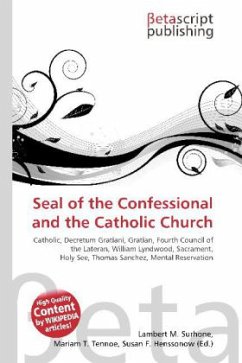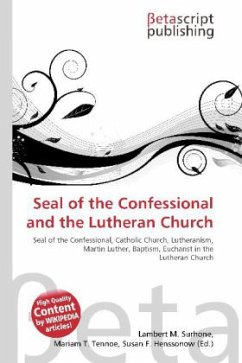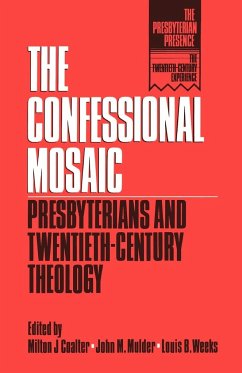
Seal of the Confessional and the Catholic Church
Versandkostenfrei!
Versandfertig in 6-10 Tagen
23,99 €
inkl. MwSt.

PAYBACK Punkte
12 °P sammeln!
Please note that the content of this book primarily consists of articles available from Wikipedia or other free sources online. The Seal of Confession or the Seal of the Confessional is the absolute confidentiality for Roman Catholic priests, of anything that they learn from penitents during the course of confession. Priests may not reveal what they have learned during confession to anyone, even under the threat of their own death or that of others. For a priest to break confidentiality would lead to a latae sententiae (automatic) excommunication, the lifting of which is reserved to the Holy S...
Please note that the content of this book primarily consists of articles available from Wikipedia or other free sources online. The Seal of Confession or the Seal of the Confessional is the absolute confidentiality for Roman Catholic priests, of anything that they learn from penitents during the course of confession. Priests may not reveal what they have learned during confession to anyone, even under the threat of their own death or that of others. For a priest to break confidentiality would lead to a latae sententiae (automatic) excommunication, the lifting of which is reserved to the Holy See in fact, to the Pope himself (Code of Canon Law, 1388
1). It is presumed such a breach could be forgiven only with the lifting of the authority of that priest to ever hear confessions again, and a requirement that the priest undertake an extended period of penance, perhaps in a monastery. In the Early Modern period, some casuists (Thomas Sanchez, etc.) justified mental reservation, a form of deception which does not involve outright lying, in specific circumstances including when such an action is necessary to protect confidentiality under the seal of the confessional.
1). It is presumed such a breach could be forgiven only with the lifting of the authority of that priest to ever hear confessions again, and a requirement that the priest undertake an extended period of penance, perhaps in a monastery. In the Early Modern period, some casuists (Thomas Sanchez, etc.) justified mental reservation, a form of deception which does not involve outright lying, in specific circumstances including when such an action is necessary to protect confidentiality under the seal of the confessional.












